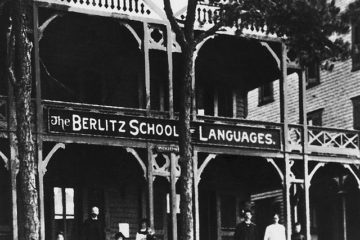Total Physical Response
Join my telegram channel for teachers.
Total Physical Response or TPR was developed in the 1960s by Dr James Asher, a professor of psychology at San Jose State University drawing on developments in psychology, humanistic teaching approaches and language teaching procedures from Harold and Dorothee Palmer (1925).
TPR can be said to be predicated on a comprehension approach. In other words, it is believed that understanding of language is necessary before production. In essence, TPR aims to provide students with a high volume of language input while using movement to aid memory recall before production spontaneously emerges some time later.
To this end, a TPR lesson or activity generally consists of imperative drills or, in other words, a series of instructions that students perform. Often these may be put into a logical order or action sequence. Similarities can be drawn between TPR and the series method, with the key difference being that an action sequence (TPR) uses the imperative (point to the door), while a Gouin series tends to use the third person (he points to the door).

Beliefs About Language
Perhaps the most obvious language belief that forms part of TPR is the importance of the verb and the imperative mood. Certainly, it is difficult to argue with the importance of verbs. The basis for the high importance of the imperative is, however, based on the idea that a second language can be learnt in the same way a first language is acquired and that a child will hear a large number of imperative sentences in their early years.
Another belief about language in TPR is clearly the importance of spoken language over written. TPR aims to build listening comprehension so that spoken production can emerge naturally. Any discussion of written form is saved until a later date.
TPR seems to believe that language is stored in chunks rather than individual words. TPR actions don’t tend to be individual words but phrases beginning with an imperative. It does not appear therefore that students are expected to remember or analyse individual words.
Beliefs About Learning
Asher's Hypotheses
Asher based his TPR system on three hypotheses:
- We all have a specific innate bio-program for language learning.
- Brain lateralisation defines different learning functions in the left and right hemispheres of the brain.
- Stress and negative emotions intervene in the learning process.
Asher’s first hypothesis basically means that we are all capable of learning a language through some optimal means. Asher believed that second language acquisition would be effective if mirroring first language acquisition. In Asher’s view this process begins with listening comprehension, which is developed through physical response to spoken language. After some time, a child starts to produce language, but only when the child is ready.
According to Asher, before a child speaks it has to internalise a fairly extensive, cognitive map of the target language. It is only once a large amount of language has been added to this map that spoken language can emerge.
Asher’s second hypothesis explains the importance of movement to TPR. Processes in the right side of the brain seem to be involved with movement, while the left hemisphere observes and learns, and later produces language. TPR brings the two hemispheres of the brain together in the learning process.
Asher’s third and final hypothesis mirrors Krashen’s affective filter hypothesis. Stress and negative emotions impact our ability to learn as we are concentrating on them. TPR aims to remove stress and negative emotions through movement while also being simple, fast-paced and fun.
Other Hypotheses
Aside from Asher’s stated hypotheses, there are a number of other beliefs about learning that we can see in TPR. As mentioned, it is believe that a second language can be learned in the same way as a first language. For this reason, it is believed that L1 should not be used.
TPR is clearly also based on behaviourist principles since it consists of a stimulus and response. Students performing the correct response are rewarded through the teachers’ praise. However, correction is only given minimally in the beginning, increasing over the length of the course. This fits with Asher’s third hypothesis of reducing stress.
Meaning is taught inductively. There are no explicit rules being taught, although these may be discussed at a later point when the student has already amassed a large collection of examples.
Finally, TPR repeats and recycles language. This reflects the belief that language needs to be encountered many times to be internalised. This can be said to be based on the trace theory of memory. Essentially, the brain builds a connection between ideas and the more that connection is “traced”, the stronger that connection becomes.
Lesson Structure
A course, or even a single lesson, built around TPR may begin with an explanation of the methodology in L1. Beyond this explanation, no L1 should be used.
In subsequent lessons, a review of actions that have been previously learnt serves as a warmer for the students. Such actions should be called out of order, and there may still be some introduction of novel phrases by mixing up previously introduced instructions.
When introducing new actions, the teacher performs the action while saying it. The students are then invited to copy the teacher while they repeat the action. After the teacher feels the students have sufficiently understood the meaning and will be able to recall the action, the teacher stops performing the action.
Further imperative drills follow the introduction of new language. Students may be selected to take the role of the teacher in calling out the actions.
Once students have had around 120 hours of instruction, conversational dialogues and role plays may be introduced.
If the written form is given in the lesson, it is given near to the end.
Total Physical Response Principles
The principles of total physical response can therefore be summarised as:
- TPR isn’t intended to be used in isolation, but alongside other methods and approaches.
- Listening is given the primary focus.
- Students are not forced to speak until they are ready as speech emerges.
- The written form is introduced last, if at all.
- Movement aids memory of language.
- Repeated encounters of the same language are necessary.
- Meaning is not discussed but demonstrated.
- Correction should be kept minimal in the beginning.
- L1 should not be used in lessons (except to explain method).
Criticisms of Total Physical Response
TPR activities remain popular today with young children and may also find success with low level adults. However, it is difficult to see TPR being used effectively with higher level adults or teens.
Another simple criticism is the over-reliance of TPR on the imperative mood. I am personally not convinced of the claim that this makes up a majority of the language a child hears when learning their first language. Unless we are training students to be soldiers or drill instructors, they need more than just the imperative to function in society.
Further, the prioritising of listening and then speaking may not be appropriate for students who need to focus on reading and writing first. The results of TPR lessons would be unlikely to help students in written exams for example.
Conclusion
TPR activities remain popular with young learners as part of a wider set of activities since they vary a lesson through movement and therefore provide excellent “stirrers”.
However, it seems clear that any course based entirely on TPR would be unlikely to achieve well-rounded results. That said, TPR doesn’t claim to be a complete solution.
Key Takeaways
- TPR combines imperative commands with movement.
- Movement aids students to remember the language.
- Speaking is not demanded until the student is ready.
- Imperative drills should be presented as an action sequence where possible and repeated.
- Correction should begin minimally.
- TPR is best suited to young learners and lower levels.
References
Brown, D. (2014). Principles of Language Learning and Teaching. Longman.
Larson-Freeman, D. (2000). Techniques and Principles in Language Teaching. Oxford University Press.
Palmer, H. & D. (1925). English Through Actions. The Institute for Research in English Teaching.
Richards, J. & Rodgers, T. (2014). Approaches and Methods in Language Teaching. Cambridge University Press.
Photo by Yan Krukov




